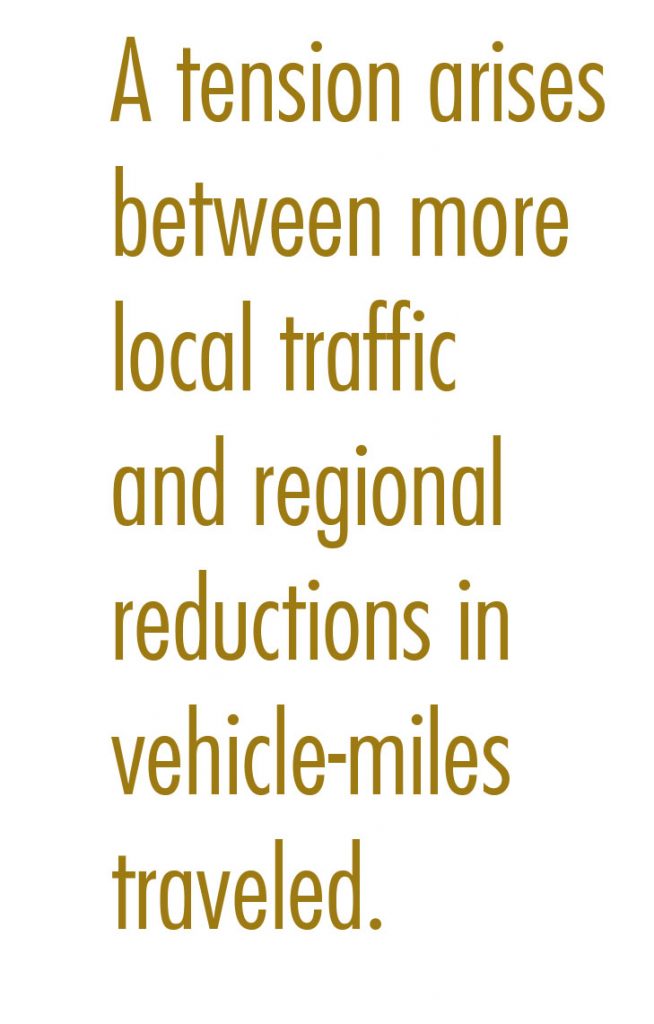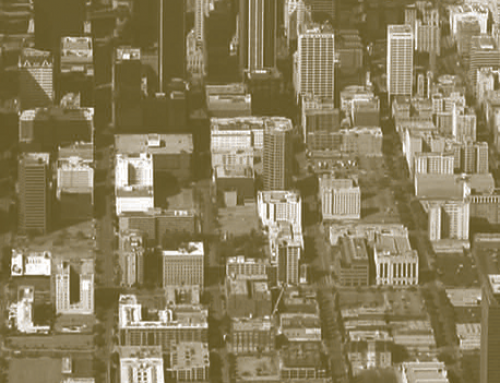When the concept of transit-oriented development (TOD) first appeared in the 1980s, many planners and academics enthusiastically endorsed it as a way to increase transit ridership and mitigate sprawl. But actual implementation of TOD projects in Southern California was slow to follow. Developers and funding institutions worried about TODs viability in a region married to the car.
Today, however, the concept of TOD has moved from academic debates to implementation around the country. In Los Angeles County, private developers have built many housing and mixed-use projects near transit stations, and more are planned. Municipalities, metropolitan planning organizations (MPOs), and even many developers are enthusiastic about building near transit. Why has development around transit become popular? What are the motivations, incentives, constraints, and problems of building adjacent to stations? What strategies will likely attract development around stations?
To address these questions, I will use the examples of two Los Angeles County light-rail lines. The Blue Line, which opened in 1990, connects downtown Los Angeles to downtown Long Beach. This line used the existing right-of-way of an earlier railway. The Blue Line has been operating for 22 years but, by and large, has not catalyzed development around its stations. With the exception of a few TODs, primarily near the Long Beach stations, there has been little development along this transit corridor. On the other hand the Gold Line, which opened in 2003 and links downtown Los Angeles to Pasadena, has generated considerable development around many of its stations. In the thirteen years that separate the inauguration of the two lines, many changes—which are partly responsible for the new-found popularity of TODs—took place in the region.
Learning from Past Mistakes
When the Blue Line was still in the design stage, rail advocates emphasized various benefits beyond mobility that the project would bring to surrounding depressed inner city neighborhoods, such as station-related amenities and economic development. But years after the inauguration of the line, empty lots and classic signs of inner city decay dominate the vicinity of many stations. Indeed, the Blue Line has suffered from four types of problems.
Years after the inauguration of the [Blue Line], empty lots and classic signs of inner city decay dominate the vicinity of many stations.
Planning problems have haunted the line, including a lack of planning by municipalities, a lack of coordination among public-sector agencies, and failure on the part of transportation agencies to initiate joint development opportunities. Environmental problems related to contaminated sites and incompatible land uses have precluded development in the vicinity of Blue Line stations. Indeed, much of the land along the corridor was not fit for housing or was zoned for uses incompatible with TODs. Social problems, including poverty, unemployment, crime, and gang violence, have stymied investment in many station neighborhoods. With mostly minority and immigrant residents, these neighborhoods also lacked the clout to voice their opinions in public hearings or demand more resources. Finally, economic problems such as high land costs near stations, combined with a lack of development incentives, frustrated progress along the line.
The Blue Line corridor also had characteristics that counteracted successful development opportunities around its stations. These included: 1) the peripheral location of many stations, which are located in the industrial back lot of metropolitan Los Angeles, away from the center of communities and characterized by low residential densities and a complete lack of neighborhood amenities; 2) poor station interface with other transportation modes and absence of pedestrian connections to surrounding neighborhoods; 3) lack of an urban design framework for station-area development and significant regulatory barriers, such as antiquated zoning and lengthy permitting processes; 4) lack of institutional commitment and missed opportunities for land acquisition on the part of public agencies; and 5) lack of community involvement in the planning process.
Pressing Issues, Countervailing Trends
 In the years between the construction of the two lines, many municipalities realized that growth and development around station areas does not simply happen through the mere presence of a transportation network. Pressing issues and trends in the Southern California region forced decision-makers to consider new ways to accommodate urban growth.
In the years between the construction of the two lines, many municipalities realized that growth and development around station areas does not simply happen through the mere presence of a transportation network. Pressing issues and trends in the Southern California region forced decision-makers to consider new ways to accommodate urban growth.
The population of LA County was over 9.5 million by the time the Gold Line was built, and the regional MPO, the Southern California Association of Governments (SCAG), projected an additional 30 percent increase by 2025. Accommodating Southern California residents in single-family homes dotting the region’s landscape would require leapfrogging into farmland and extending urban sprawl. Demographic changes, such as a growing population of transit-dependent Latino households and seniors willing to consider alternatives to suburban single-family housing, further supported the case for more TODs.
At the same time, housing affordability reached a record low in the Southern California region. This issue, combined with the recent economic crisis, meant that an increasing share of households could no longer afford single-family homes, and instead had to consider different and more affordable housing options, including duplexes, town homes, apartments, and condominiums.
According to SCAG, the Los Angeles region has the worst traffic congestion in the nation. Living in close proximity to jobs and retail opportunities is now a desirable option for urbanites wishing to avoid long commutes in congested traffic.
Many Angelenos increasingly appreciate having more transportation options, including walking and riding the bus or the train.
Solo driving has become much more expensive in recent years with gasoline prices up to $4.70 per gallon in 2011 as compared to $1.60 in 2001. Many Angelenos increasingly appreciate having more transportation options, including walking and riding the bus or the train. While the private car remains the undisputed travel mode of choice for most households in the region, transit has slowly increased its share.
Finally, The South Coast Air Basin has the worst air quality in the nation, and automobile emissions contribute greatly to the region’s air pollution. Southern Californians typically rank the environment as an important concern in opinion polls.
These demographic, economic, and environmental trends have expanded the market for TODs and encouraged a larger segment of the public to seek alternatives to the single-family house.
An Enabling Policy Environment
A lack of institutional commitment and initiative contributed to the lackluster effect of the Blue Line on its adjacent neighborhoods. This seems to have changed in recent years. In 2006, California voters approved Proposition 1C, a $2.8 billion bond for affordable housing that includes $300 million for a TOD infrastructure implementation program. An additional provision of Prop 1C is the availability of loans for mixed-use, housing, and commercial developments within one quarter mile of a transit station. In 2008, LA County voters passed Measure R, dedicating a half-cent sales tax to transit and traffic congestion relief projects.
SCAG has initiated the Compass Blueprint strategy, which directs most future development towards existing and emerging centers, near transit hubs, and along major transportation corridors. In Los Angeles, the Department of City Planning has made TOD the focal point of new Specific Plans. The combined effect of these multi-jurisdictional actions has been to create an enabling policy environment, which was absent a decade ago; developers are responding.
A Changing Mindset of Developers
For a long time developers were reluctant to build TODs because they assumed that such developments would appeal only to a narrow market segment: singles, young professionals, and “empty nesters.” However, this narrow market segment is becoming much larger. Developers building along the Gold Line corridor also targeted a broader market segment that included different age groups, families, seniors, two-income households, and single-income earners. Developers have also responded positively to development incentives such as increased floor-area ratios, reduced parking ratios, relaxed open space requirements, and public subsidies. Importantly, these developers and their architects now see more potential for TODs, acknowledging the demand for more homes, schools, and offices in the metropolitan core instead of the suburban and exurban periphery.
Tensions and Challenges
 While incentives and market conditions prompt municipalities and developers to pursue TODs, some challenges still remain. When TODs are developed near single-family districts, residents of these areas often resist changes that alter the established character of their neighborhoods. Designers must confront the challenge of making higher-density developments appear less dense, and TOD proponents must confront the broader challenge of bringing the public along to support the concept of TOD.
While incentives and market conditions prompt municipalities and developers to pursue TODs, some challenges still remain. When TODs are developed near single-family districts, residents of these areas often resist changes that alter the established character of their neighborhoods. Designers must confront the challenge of making higher-density developments appear less dense, and TOD proponents must confront the broader challenge of bringing the public along to support the concept of TOD.
Market realities may also prevent the inclusion of pedestrian-oriented retail in station areas. Many small bakeries, coffee shops, and flower shops cannot afford the high rents in newly established TOD districts. At the same time, municipal desires for tax revenue may encourage commercial uses that are not necessarily pedestrian- or transit-friendly.
 High rents and sale prices in some TOD areas mean that residential units are more likely to be occupied by affluent tenants with multiple cars than by transit-dependent households. This is problematic for transit agencies, planners, and public officials who wish to boost transit ridership. Additionally, the introduction of high-density development in a neighborhood without a simultaneous change from driving to walking, biking, or transit will likely increase traffic congestion in the immediate area, a concern raised by many critics of high-density projects. Thus a tension arises between more local traffic and regional reductions in vehicle-miles traveled.
High rents and sale prices in some TOD areas mean that residential units are more likely to be occupied by affluent tenants with multiple cars than by transit-dependent households. This is problematic for transit agencies, planners, and public officials who wish to boost transit ridership. Additionally, the introduction of high-density development in a neighborhood without a simultaneous change from driving to walking, biking, or transit will likely increase traffic congestion in the immediate area, a concern raised by many critics of high-density projects. Thus a tension arises between more local traffic and regional reductions in vehicle-miles traveled.
Parking requirements for TODs also raise questions. Too much parking may prompt people to drive rather than ride the train, whereas too little parking may frustrate residential and commercial tenants. Low parking requirements may encourage TOD residents to choose transit over cars. Some developers expressed concern about the marketability of their project if it does not have ample parking, but developers can, of course, provide more parking if they think the market demands it.
Deciding whether to provide development incentives or impose development fees in a given station area is a delicate process. Incentives such as density bonuses, higher floor area ratios and building heights, and reduced parking requirements allow developers to improve the profitability of TODs. Development fees and requirements for affordable housing or open space can give cities important amenities but may also serve as disincentives for development.
Incentives such as density bonuses, higher floor area ratios and building heights, and reduced parking requirements allow developers to improve the profitability of TODs.
Proponents of TOD face three additional types of challenges: 1) Procedural/Planning challenges, including difficulties associated with coordinating and balancing the various needs of stakeholders in complex joint development and infill projects; 2) Economic/Market challenges, including the rising cost of land in station neighborhoods that often follows the announcement of a new transit line, as well as typically higher construction costs for mixed-use projects; 3) Physical/Environmental challenges, including noise from transit vehicles and technical difficulties associated with building very close to a transit line.
Addressing the Challenges
Many factors are working in favor of development around transit in Southern California. These factors include a willingness on the part of municipalities to encourage TODs, a regional vision that encourages development around transportation nodes, an enabling policy environment, developers’ changing mindsets, and pressing environmental and transportation concerns in the region prompting an exploration of alternative housing options. Still, certain challenges remain, and the following suggestions respond directly to them.
- Plan stations near people and activities
Good planning for TODs begins with the planning of the transportation line. Station location is the most important factor in attracting development at a particular site. As the failure of the Blue Line to stimulate development has shown, stations should be located at the “front door” of communities, near other urban amenities and existing nodes of activity, such as schools, parks, and retail.
- Zone for TODs
Municipalities that pre-plan for TODs in anticipation of a transit line are in a better position to attract development. Designation of transit overlay zones that extend a half mile around transit stations and have defined guidelines and incentives for TODs can ensure that a city’s goals are respected, minimize uncertainty for developers, and streamline the development process.
- Educate and involve the public
In a region not known for its transit culture, educating the public about the potential benefits of TOD is crucial. Ideally, communities can formulate a shared vision as part of a proactive public sector planning process prior to the designation of a TOD district. Residents are more likely to welcome aesthetically appealing TODs in their neighborhoods. Well-designed TODs with smaller, more affordable units (condos, apartments, and lofts) can increase available housing options and attract those priced out of the single-family housing market.
-
- Develop strong public/private partnerships
TODs provide opportunities for joint development agreements and cost-sharing projects (e.g., parking structures and plazas). Partnerships between developers, municipalities, and transportation agencies can reduce costs for developers and ensure desirable amenities for neighborhoods. Cities can reduce developers’ costs by allowing TOD building “by right” if projects comply with the requirements of a transit overlay zone. Cities can also identify empty or underutilized sites and help convert them to developable lots.
- Develop strong public/private partnerships
Partnerships between developers, municipalities, and transportation agencies can reduce costs for developers and ensure desirable amenities for neighborhoods.
- Achieve better coordination among different public entities
Frequently the involvement of different public agencies and actors with different requirements, goals, expectations, and levels of authority stymies opportunities for TOD projects. The establishment of a Corridor Coordinating Council as a Joint Powers Authority, consisting of high-level representatives from different public sector agencies involved in corridor development, can help establish a corridor-level TOD vision and set goals for successful projects.
- Find the right balance between carrots and sticks
Development fees and other requirements can bring desirable amenities to a jurisdiction but may scare developers away. Cities must monitor the balance between incentives and requirements, weighing the condition of the economy and other market forces, the development potential, and desirability of a site for developers.
- Actively recruit pedestrian-oriented, transit-friendly uses
The ideal of a transit village with pedestrian-oriented and transit-friendly uses, neighborhood retail, galleries, drug stores, bakeries, and coffee shops generating foot traffic will not be realized if such commercial tenants cannot afford to rent space in new developments. In certain cases, the municipalities may consider offering tax incentives (for the first few years) to help create a critical mass of desirable pedestrian-oriented tenants.
- Resolve the parking dilemma
To address the parking dilemma for TOD projects, cities can 1) decouple parking from residential development and give residents the option to purchase a unit with or without parking; 2) develop maximum parking standards for TODs; 3) explore the potential for shared parking; and 4) allow developers to satisfy parking requirements by leasing parking spaces in adjacent structures.
- Make transit more appealing
Most important, cities find TODs appealing because officials expect them to increase transit ridership. This, however, will not happen if transit is inconvenient. Good multimodal linkages should connect transit stops to neighborhoods. To incentivize ridership, cities and developers may consider offering discounted weekend and monthly passes, as well as free shuttle rides connecting stations to neighborhoods.
Conclusion
TODs are certainly not a panacea for the region’s problems. However, by encouraging development around transit, expanding the supply of housing, and offering convenient transit as a modal choice, TODs are an indispensable component of a regional strategy to reduce traffic and accommodate growth in ways that preserve long-term sustainability.
Further Readings
Anastasia Loukaitou-Sideris. 2010. “A New-Found Popularity for TODs? Lessons from Southern California,” Journal of Urban Design, 15(1): 49–68.
Anastasia Loukaitou-Sideris and Tridib Banerjee. 2000. “The Blue Line Blues: Why the Vision of Transit Village May Not Materialize Despite Impressive Growth in Transit Ridership,” Journal of Urban Design, 5(2): 101–125.
Ping Chang. 2007. The State of the Region 2007, Los Angeles: Southern California Association of Governments.







